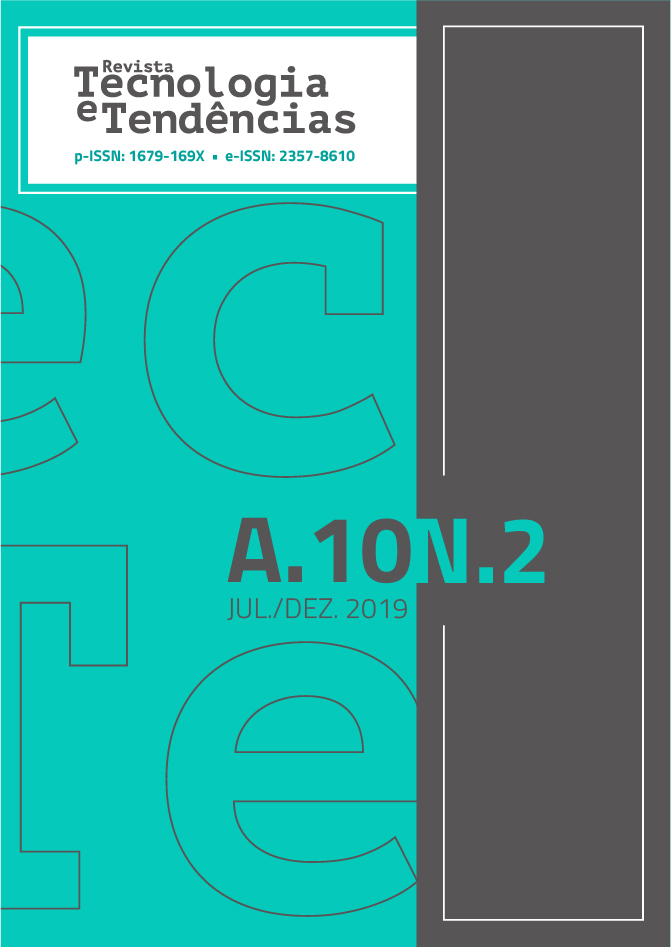AVALIAÇÃO DAS PROPRIEDADES E POTENCIALIDADES DA PRÓPOLIS VERDE E SUA FONTE BOTÂNICA BACCHARIS DRACUNCULIFOLIA
DOI:
https://doi.org/10.25112/rtt.v10i2.2078Abstract
O Brasil é o terceiro maior produtor de própolis do mundo, composto que possui atividade farmacológica como antibiótico, antimutagênico, cicatrizante, antioxidante e anti-inflamatório, utilizado no tratamento alternativo de várias doenças. O objetivo desse trabalho foi comparar as propriedades químicas e potencialidades da própolis verde com a planta Baccharis dracuncunlifolia DC, que é a sua fonte botânica, a partir do extrato bruto obtido por extração a quente, por meio de análises de absorbância na região do UV-Visível para quantificação de compostos fenólicos, flavonoides, potencial antioxidante e poder bactericida utilizando microrganismos Staphylococcus aureus e Escherichia coli como biológico. A partir das análises espectrofotométricas foram obtidos teores de concentração de compostos fenólicos totais (TCFT) e flavonoides totais (TFT) superiores para a própolis verde (a média de valores encontrados para a própolis é de 1,56 ± 0.01 mEqQ/g e para a planta 0,76 ± 0.02 mEqQ/g na determinação de TFT e TCFT encontrado na amostra investigada, foi de 15,10 e 9,26% para a própolis e para a fonte botânica B. dracunculifolias, respectivamente), assim como o potencial bactericida. Os métodos empregados mostraram que a planta Baccharis dracuncunlifolia DC é fonte botânica para a própolis verde devido as similaridades entre as duas matrizes. A análise da potencialidade bactericida indicou que o extrato da própolis possuiu a capacidade de inibir o crescimento bacteriano de espécies gram-positiva e gram-negativa indicando que podem ser ferramentas importantes para tratar infecções causadas por essas bactérias.
Palavras-chave: Própolis. Baccharis dracuncunlifolia. Extração. Caracterização.
ABSTRACT
Brazil is the third largest producer of propolis in the world, a compound that has pharmacological activity such as antibiotic, antimutagenic, healing, antioxidant and anti-inflammatory, used in the alternative treatment of various diseases. The objective of this work was to compare the chemical properties and potentialities of green propolis with Baccharis dracuncunlifolia DC plant, which is its botanical source, from the raw extract obtained by hot extraction, by absorbance analysis in the UV- Visible for quantification of phenolic compounds, flavonoids, antioxidant potential and bactericidal power using Staphylococcus aureus and Escherichia coli microorganisms as biological. From the spectrophotometric analyzes were obtained concentrations of total phenolic compounds (TCFT) and total flavonoids (TFT) higher for green propolis (the average values found for propolis is 1.56 ± 0.01 mEqQ / g for the plant). 0.76 ± 0.02 mEqQ/g in the determination of TFT and TCFT found in the investigated sample was 15.10 and 9.26% for propolis and botanical source B. dracunculifolias, respectively), as well as bactericidal potential. The methods employed showed that Baccharis dracuncunlifolia DC plant is a botanical source for green propolis due to the similarities between the two matrices. Analysis of bactericidal potential indicated that propolis extract has the ability to inhibit bacterial growth of gram-positive and gram-negative species indicating that they may be important tools for treating infections caused by these bacteria.
Keywords: Propolis. Baccharis dracuncunlifolia. Extraction. Characterization.
Downloads
Published
Issue
Section
License
• Os autores mantêm os direitos autorais e concedem à revista o direito de primeira publicação com o trabalho licenciado sob a Licença Creative Commons - Attribution 4.0 International (CC BY 4.0).
• Os autores são estimulados a publicar e distribuir seu trabalho online (ex.: em repositórios institucionais ou na sua página pessoal), pois isso pode aumentar o impacto e a citação do trabalho publicado.
--------------------------------------------------------------------------------------------------------------------------------
• The authors retain the copyright and grant the magazine the right of first publication with the work licensed under the Licença Creative Commons - Attribution 4.0 International (CC BY 4.0).
• Authors are encouraged to publish and distribute their work online (eg in institutional repositories or on their personal page), as this may increase the impact and citation of the published work.

